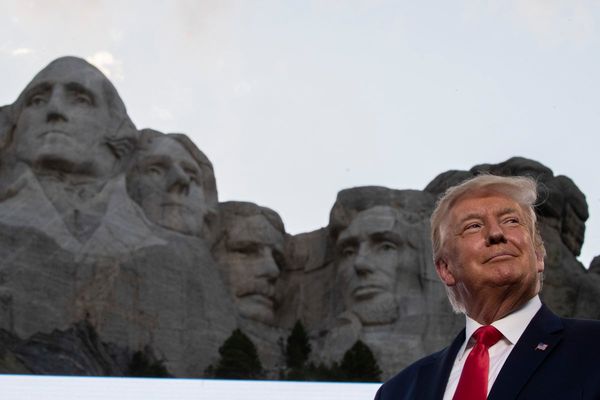Elon Musk’s bid to dominate global carmaking is taking a new turn, and dividing opinion. Some see him as Henry Ford in the age of the Model T; others, as Steve Jobs ushering in the iPhone era. But what if he’s Rick Wagoner, who steered General Motors Co. into a ditch?
Musk’s Tesla Inc. has cut prices of its electric cars at least a half-dozen times already this year, shaving almost a third of the cost off its top-selling model in the US. The strategy has no precedent—nor is there consensus as to whether it heralds more industry disruption or signals Musk’s desperation.
The camp comparing Musk to Ford includes none other than the current boss of the company that bears his name. “Look up 1913,” Ford Motor Co. Chief Executive Officer Jim Farley told reporters last week, suggesting that Musk’s actions—develop an epochal product, innovate how it’s made and drive costs down—are reminiscent of Ford’s.
The Jobsian theory is that Musk is bringing Silicon Valley tactics to the EV industry. Just as the iPhone rendered Nokia and Motorola devices obsolete, Musk wants and needs to obliterate Rivian Automotive Inc. and Lucid Group Inc.
GM is the cautionary tale. Wagoner doubled down on incentives instead of accepting that GM was cranking out too many cars after the Sept. 11 terror attacks. The “Keep America Rolling” campaign set Detroit on a path to destruction—GM and Chrysler went bankrupt in 2009, and Ford narrowly avoided Chapter 11 bankruptcy protection.
Musk’s plans have been under the microscope before. Back in 2018, bearish short sellers Jim Chanos and David Einhorn were at odds with ARK Investment Management founder Cathie Wood and billionaire investor Ron Baron over whether Tesla would survive its early struggles to mass-manufacture cars, let alone thrive. The company’s market valuation soared from around $57 billion at the end of that year to more than $1 trillion as recently as April 2022. It dipped back below $500 billion in intraday trading Wednesday.
Musk’s latest strategic pivot will determine what happens next in an industry that Tesla already has turned on its head over the past decade. After the pandemic led to the biggest disruption in generations to auto supply-and-demand dynamics, Musk is betting his competitors will have little choice but to respond to his price cuts.
“We are trying to resist,” Luca de Meo, CEO of French carmaker Renault, said this week of Tesla’s pricing pressure. Speaking in January in his capacity as president of Europe’s auto trade group, he said carmakers will need to make money selling EVs. “Otherwise this will become—from the beginning—a not-very-healthy business.”
Even as rivals seek to ride out the price-cutting storm, a closer look at Tesla itself reveals that things are changing within Musk’s own empire.
Investors have always been able to rely on Musk to talk about growth. In its early years, Tesla expanded in fits and starts from a single car plant in California. After opening a second factory in Shanghai in early 2020, the company issued a wildly ambitious forecast: 50% average growth in vehicle deliveries over multiple years, with manufacturing capacity scaled up as quickly as possible.
Tesla made good on part of the plan, opening two new car factories in two months early last year: the first near Berlin and the second in Austin.
What Musk hasn’t grown in the past few years is Tesla’s lineup. Those two plants in Germany and Texas only boosted capacity to produce Model Y sport utility vehicles, the most recent new passenger car the company has added to its repertoire. The Model Y has been a smash hit and was the main reason that, in the first five quarters after Tesla projected 50% average annual growth, it increased deliveries much faster than that.
But in the last four quarters—even with all that additional capacity coming online—the company has fallen below that pace.
So is the Model Y getting a bit stale, or do the problems lie with the rest of Tesla’s lineup, which is more dated?
Demand for the Model Y has been remarkable considering that it sold for more than $65,000 last year in the US. There wasn’t much opportunity for a vehicle that expensive to go further up the sales charts in good times, let alone in a rising interest-rate environment.
With a starting price now just below $47,000 and a refreshed version reportedly on the way, the Model Y has a chance to top global sales rankings, a feat no one would have thought possible a few years ago.
Read More: Tesla Drops Model Y Starting Price Below the Average US Vehicle
The Model 3 is in greater need of a face-lift, as it’s coming up on its sixth birthday without having undergone a major redesign. Reuters has reported that it, too, will be updated later this year.
To the extent Musk gets compared to Henry Ford or Steve Jobs, it’s based on the success of the Model Y and Model 3. The only other vehicle near the top of the global EV sales rankings is a $4,500 minicar made by a joint venture between two Chinese manufacturers and GM.
With two EVs in high-volume production achieving unmatched economies of scale, and manufacturing innovations ranging from single-piece vehicle structures to simpler batteries, Tesla can bring costs down along with the prices of its vehicles. Rivals such as Rivian and Lucid are far from breaking even, and the same can be said for Ford and other incumbents now standing up their EV operations.
Making these businesses sustainable before battery costs reach parity with combustion engines was going to be hard enough. Musk’s new direction is now making that task all the more difficult.
“You have to meet the customer where they’re at, from an affordability perspective,” GM CEO Mary Barra said Tuesday. On Bloomberg Television, CFO Paul Jacobson made clear the automaker has its eye on Tesla. “We’ve got a competitor who is posting really strong results and really strong margins. We need to make sure that we lower our costs.”
Automakers are quite used to operating on razor-thin margins, and Musk is bullish, insisting only last week that Tesla could theoretically make zero profit upfront and earn money later off self-driving software.
There are plenty of reasons to be skeptical about this, not least of which is that he’s long oversold Tesla’s autonomous-driving capabilities. It’s unclear whether he’s truly willing to torch Tesla’s profit margins—he is sitting on a sizable and growing cash pile—or if it’s actually the case that he has less choice in the matter than he’s let on. Musk didn’t immediately reply to a request for comment.
After Tesla fell well short of its growth objective last year, increasing vehicle sales by 40%, it set a production target for this year roughly in line with that rate, if not slower. Even after all the discounting Musk did in the first quarter, deliveries increased 37% from a year earlier.
The markdowns meant that Tesla’s automotive gross margin—already a longstanding focal point for investors—was the figure Wall Street was anticipating when the company reported first-quarter earnings last week. Tesla had advised that the figure would stay above 20% this year.
Instead of being upfront about falling short, Tesla removed any mention of automotive gross margin from its earnings deck, forcing analysts and investors to do the math. At 19%, the margin was the lowest in 11 quarters.
Tesla also doesn’t have the greatest track record in generating results with redesigns. The company took a light-touch approach to updating its Model S sedan and Model X SUV two years ago, and those vehicles—first launched in 2012 and 2015, respectively—are now showing their age even after performance and interior upgrades. Tesla delivered just 10,695 units combined in the first quarter, an almost two-year low, despite Musk cutting prices by an average of almost $23,000 apiece.
Tesla marked the S and X down further in the first week of this month, then changed tack, bumping prices back up a bit one day after those earnings came out.
Ford CEO Farley was making a mostly favorable comparison between Musk’s 21st century strategy and Henry Ford’s invention of the moving assembly line 110 years ago. But he did allude to one key lesson Ford eventually learned after his unwillingness to replace the Model T allowed GM and others to catch up.
“What he’s going to learn,” Farley said of Musk, “is that product freshness means a lot.” —With Keith Naughton, Dorothy Gambrell, Albertina Torsoli and David Welch
©2023 Bloomberg L.P.







